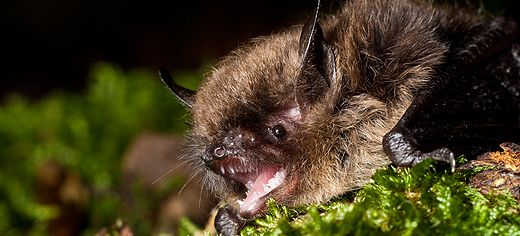
Conservation efforts have taken an important step forward, thanks to observations of bats - creatures that make up a quarter of all of the UK's native mammal species.
In a paper published today, researchers at the University of Leeds describe how they recorded the echolocation calls of more than 15,000 bats during 120 walks in the Lake District to create maps that show the suitability of areas for bat habitation.
They are the most detailed large-scale habitat suitability maps ever created for bats in the UK, with a resolution of 50 metres.
The impact of the maps will extend far beyond bat conservation, the researchers say. “Since bats are particularly sensitive to changes in the environment, they are recognised as good indicators for the overall health of an ecosystem,” says Dr Chloe Bellamy from the University of Leeds, lead author of the paper.

To produce these detailed maps, the researchers studied the likelihood of finding bats in relation to the characteristics of both their immediate environment and those of the much wider landscape, giving important insights into how they are affected by changes to the countryside.
While the impact on the bats’ movements caused by urban cover, such as roads, varied among different species over small distances, the researchers found that they were all affected when you looked at a much larger area.
Professor John Altringham, who led the research team, says: “Conservation managers and planners tend to look at the local effects of urbanisation or other environmental change, but our research highlights the potentially severe impact on an ecosystem of more subtle changes over much larger areas.”
The development of new open source software by Dr Chris Scott, during his PhD studies at the University of Leeds, enabled the researchers to distinguish between the echolocation calls of all eight species of bats that were studied. “This is something that would have been impossible with the technology that was available only a few years ago, so we were incredibly fortunate to have Chris in our research team,” says Dr Bellamy.
The researchers have recently completed mapping the Yorkshire Dales and the North York Moors and are now continuing their research in the Northumberland National Park and the North Pennines.
“There have already been some magical moments during the field trips, such as watching and listening to Daubenton’s bats from a canoe in the middle of Coniston Water,” says Dr Bellamy. “The English countryside during twilight makes for a stunning natural laboratory.”
The research was funded by University of Leeds Research Scholarships for Dr Bellamy and Dr Scott, with additional support from the People’s Trust for Endangered Species, the Forestry Commission, the National Trust and Cumbria Wildlife Trust.
The paper was published in the Journal of Applied Ecology.
Images:
Additional images of the maps are available upon request.
Image credit: Dr Chris Scott.
Further information: